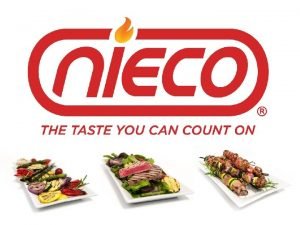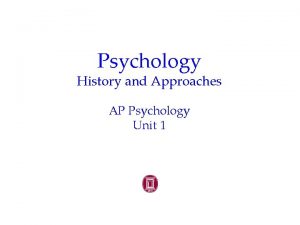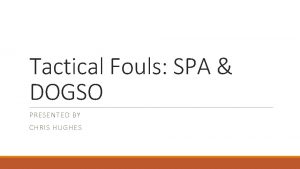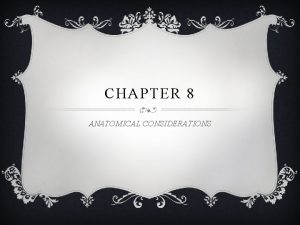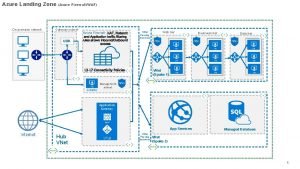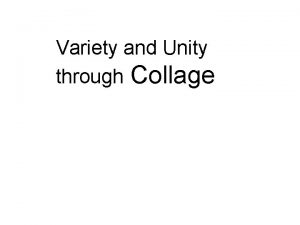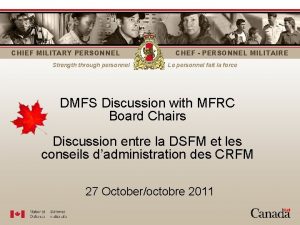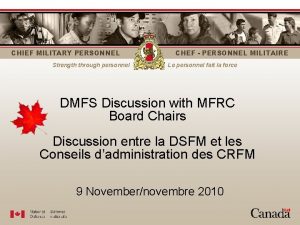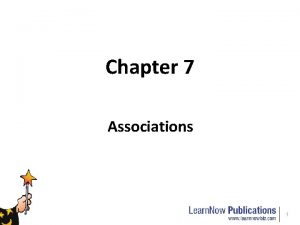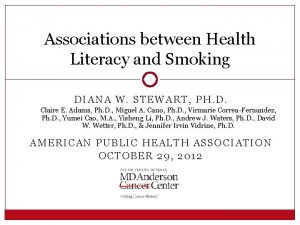PERSONNEL MANUALS CONSIDERATIONS for ASSOCIATIONS Diana Cecil SPHR






























- Slides: 30

PERSONNEL MANUALS: CONSIDERATIONS for ASSOCIATIONS Diana Cecil, SPHR Human Resource Consultant Texas Association of Counties NACO – Washington DC March 5, 2012

Objectives • Identify the purpose and limitations of personnel manuals • Create an awareness of the benefits and liabilities of personnel manuals • Determine the importance of content and legal compliance issues

Benefits of Personnel Manuals • A valuable communication tool • Pre-determined and defined decisions • Promotes legal compliance with federal and state employment laws • Promotes consistent treatment for all employees

Personnel Manual Purposes Served • They help employees understand the association’s philosophy • They inform employees about conditions of their employment • They explain the benefits available to all employees

Potential Liabilities • May erode employment at-will doctrine • Require careful annual updating • May be poorly written • May not cover all key areas • May not be followed consistently • May bind the association unintentionally

Disclaimers are Important • This is not a contract – no employment guaranteed • This is only a set of guidelines • This does not alter employment at-will doctrine • This can be changed at any time with or without notice

Fair Labor Standards Act - FLSA The FLSA does six things: • Sets minimum wage • Establishes overtime pay requirements • Sets recordkeeping requirements • Sets equal pay for equal work • Restricts child labor • Requires breaks for nursing mothers No minimum number of employees

Fair Labor Standards Act - FLSA What’s different for counties: • Compensatory time allowed • Law Enforcement allowed a partial overtime exemption called the 207(k) exemption • Exempt employees allowed to have “partial day docking” due to public accountability

American’s with Disabilities Amendments Act 2008 The ADAAA does the following: Prohibits employers from discriminating against employees with disabilities. It requires: • Interactive process • Reasonable accommodation unless undue hardship exists Minimum number of employees is 15

American’s with Disabilities Amendments Act 2008 What’s different for counties: Same for all organizations – differences lie in the ability to make the reasonable accommodation • Size of organization • Financial resources of organization • Nature and structure of operation

Title VII of the Civil Rights Act - 1964 Title VII makes it unlawful to discriminate based on an employees: • Race • Color • Religion • Sex • National Origin • Amended by the Pregnancy Discrimination Act to protect employees who are pregnant Minimum number of employees is 15

Title VII of the Civil Rights Act - 1964 What’s different for counties: Same for all organizations • Implement policies prohibiting • Train all supervisors to limit your liability

The Age Discrimination in Employment Act 1967 ADEA protects both applicants and employees who are over the age of 40 from discrimination based on age • Counties must comply same as any other organization Minimum number of employees is 20

Family Medical Leave Act - FMLA The FMLA requires: • Employer to grant qualifying employees up to 12 weeks of unpaid leave for Birth or care of child, foster child or adoption of child Care of spouse, parent or child for serious health condition Employees own serious health condition Minimum number of employees is 50

Family Medical Leave Act - FMLA The FMLA requires: • Employer to grant qualifying employees up to 12 weeks of unpaid leave for Military exigency leave Military care giver leave

Family Medical Leave Act - FMLA Other FMLA requirements: • Employee must have worked for employer for 12 months (not consecutive) • Employee must have worked for 1250 hours in the past 12 months NOTE: 11 states have enacted their own FMLA laws California, Minnesota, Vermont, Connecticut, New Jersey, Washington, Hawaii, Oregon, Wisconsin, Maine, Rhode Island

Family Medical Leave Act - FMLA What’s different for counties: Under federal FMLA all public agencies are covered, they must post the federal poster and respond to FMLA request when asked. They do not have grant leave unless all the eligibility parameters are met, including the 50 employees.

The Occupational Safety and Health Act OSHA states that an employer "shall furnish to each of its employees conditions of employment and a place of employment free from recognized hazards that are causing or are likely to cause death or serious injury or harm to its employees. ” OSHA enforces regulations which require employers to undertake specific safety and health precautions and has specific monetary penalties. No Minimum Number of Employees

The Occupational Safety and Health Act OSHA To help assure a safe and healthful workplace, OSHA also provides workers with the right to: • Ask OSHA to inspect their workplace • Use their rights under the law without retaliation and discrimination • Receive information and training about hazards, methods to prevent harm, and the OSHA standards that apply to their workplace. The training must be in a language you can understand • Get copies of test results done to find hazards in the workplace • Review records of work-related injuries and illnesses • Get copies of their medical records

The Occupational Safety and Health Act OSHA What’s different for counties: Currently, 25 states exercise some level control over occupational safety and health in their states and include local public sector workplaces. They are: Alaska, Arizona, Arkansas, California, Connecticut, Hawaii, Indiana, Iowa, Kentucky, Maryland, Michigan, Minnesota, Nevada, New Jersey, New Mexico, New York, North Carolina, Oregon, South Carolina, Tennessee, Utah, Vermont, Virginia, Washington, Wyoming

Other Law’s That Matter • Uniformed Services Employment and Re-employment Rights Act – USERRA • Consolidated Omnibus Budget Reconciliation Act – COBRA • Genetic Information Non-Discrimination Act -2008

Other Compliance Issues • Equal Employment Opportunity • Employment At-Will Status • Sexual & General Harassment – Hostile Environment • Workers’ Compensation • Drug Free Workplace

What Else to Include? • Benefits • All types of time off • Pay issues • Safety • Discipline • Terminations

What Else to Include? • Employee Expectations - Tardiness/Absenteeism - Conflict of Interest - Performance Standards

What Else to Include? • Social Media Policies • Cell Phone Policies • IRS Fringe Benefit Policies • Computer Policies • Unique Issues for Your Association

What Not to Include • Permanent Employees • Probationary Periods • Just Cause – For Cause • Property Interest Statements • Annual Salary Statements

Signed Employee Receipts • Each employee should receive a copy of the manual • Each employee should sign an acknowledgement • Each employee should sign for receipt of new and revised policies.

In Summary Your association personnel manual should: • Explain written rules, benefits, and expectations for all employees. • Be communicated to each employee. • Be reviewed regularly and revised as needed. • Be compliant with all federal and state laws.

Questions?

PERSONNEL MANUALS: CONSIDERATIONS for ASSOCIATIONS Diana Cecil, SPHR Human Resource Consultant Texas Association of Counties NACO – Washington DC March 5, 2012
 Hijos de sergio y estibaliz
Hijos de sergio y estibaliz Electronic service manuals
Electronic service manuals Nieco broiler burger king
Nieco broiler burger king Ca idms manuals
Ca idms manuals Irs concrete bridge code correction slip
Irs concrete bridge code correction slip Teco manuals
Teco manuals Toastmasters successful club series
Toastmasters successful club series Cecil rhodes
Cecil rhodes Cecil rhodes karikatur
Cecil rhodes karikatur Berlin conference 1884 map
Berlin conference 1884 map Cecil ang
Cecil ang Triada de cecil gray
Triada de cecil gray Cecil rhodes political cartoon
Cecil rhodes political cartoon Dan cecil
Dan cecil Hard frost summary
Hard frost summary Berlin conference cecil rhodes quote
Berlin conference cecil rhodes quote Francis cecil sumner, ph.d.
Francis cecil sumner, ph.d. Classify the following unbalanced chemical equations
Classify the following unbalanced chemical equations Cecil rhodes definition world history
Cecil rhodes definition world history Francis cecil sumner
Francis cecil sumner Cecil castellucci beige
Cecil castellucci beige Considerations examples
Considerations examples Qualitative research design
Qualitative research design Spa vs dogso
Spa vs dogso Neurological considerations in language acquisition
Neurological considerations in language acquisition Basal state specimen
Basal state specimen Hach wims
Hach wims Ethical issues in experimental research
Ethical issues in experimental research Antecubial region
Antecubial region Three considerations of societal marketing concept
Three considerations of societal marketing concept Azure landing zone considerations
Azure landing zone considerations


